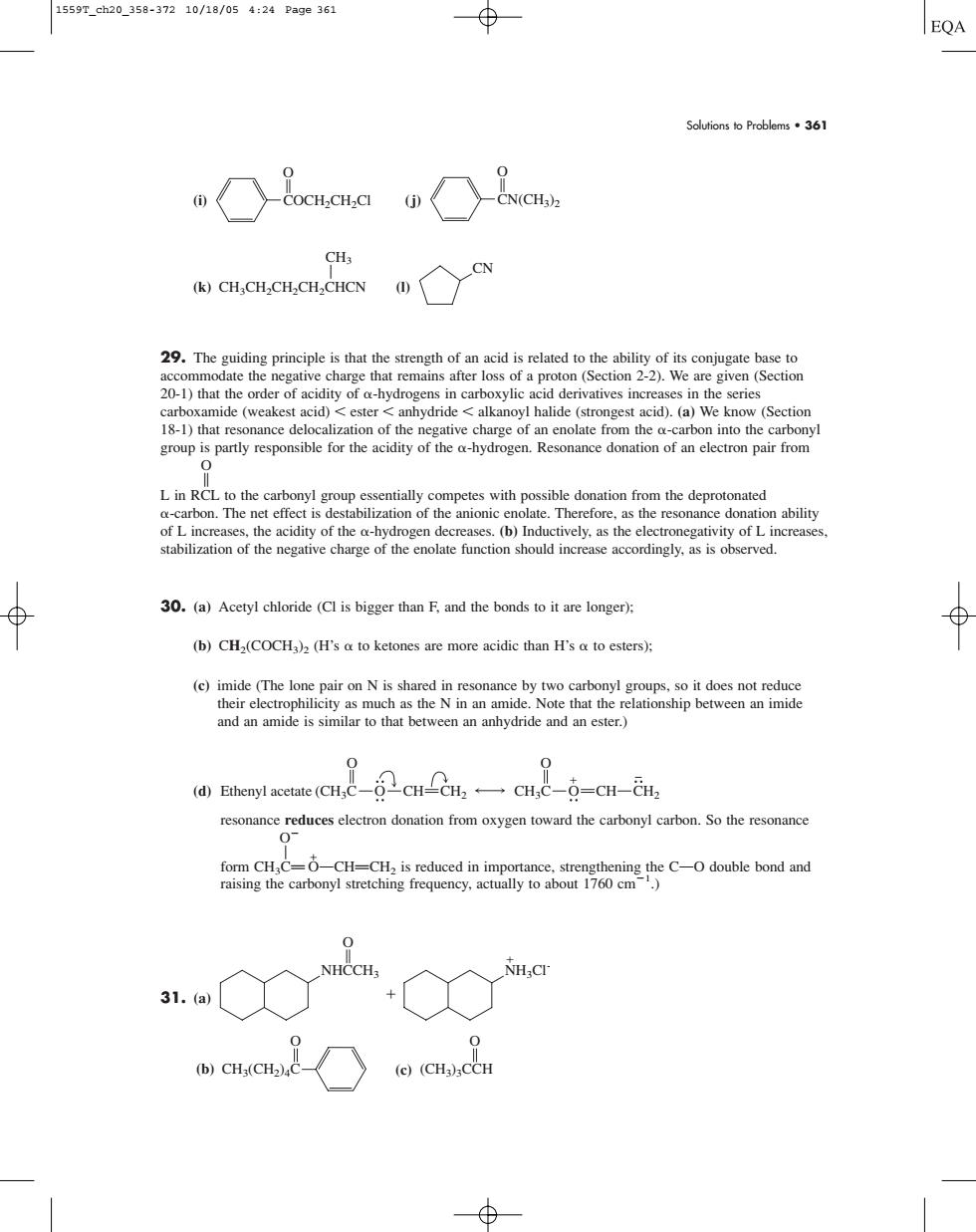正在加载图片...

1559T_ch20_358-37210/18/054:24Pa9e361 ⊕ EQA Soutionso Problems361 re given(Section D 18-1)that resonance delocalization of the negative charge of an enolate from the acarbon into the carbony group is partly responsible for the acidity of the a-hydrogen.Resonance donation of an electron pair from a-carbon.The net effect is de e e款 30.(a)Acetyl chloride (Clis bigger than F.and the bonds to it are longer): (b)CH(COCH)(H'sto ketones are more acidic than H's to esters) so it and an amide is similar to that between an anhydride and an ester.) d)(Ccucu-9-CH-H resonance reduces electron donation from oxygen toward the carbonyl carbon.So the resonance 0- NHCCH NH.C (e)(CHa)CCH Solutions to Problems • 361 (i) (j) CH3 A (k) CH3CH2CH2CH2CHCN (l) 29. The guiding principle is that the strength of an acid is related to the ability of its conjugate base to accommodate the negative charge that remains after loss of a proton (Section 2-2). We are given (Section 20-1) that the order of acidity of -hydrogens in carboxylic acid derivatives increases in the series carboxamide (weakest acid) ester anhydride alkanoyl halide (strongest acid). (a) We know (Section 18-1) that resonance delocalization of the negative charge of an enolate from the -carbon into the carbonyl group is partly responsible for the acidity of the -hydrogen. Resonance donation of an electron pair from O B L in RCL to the carbonyl group essentially competes with possible donation from the deprotonated -carbon. The net effect is destabilization of the anionic enolate. Therefore, as the resonance donation ability of L increases, the acidity of the -hydrogen decreases. (b) Inductively, as the electronegativity of L increases, stabilization of the negative charge of the enolate function should increase accordingly, as is observed. 30. (a) Acetyl chloride (Cl is bigger than F, and the bonds to it are longer); (b) CH2(COCH3)2 (H’s to ketones are more acidic than H’s to esters); (c) imide (The lone pair on N is shared in resonance by two carbonyl groups, so it does not reduce their electrophilicity as much as the N in an amide. Note that the relationship between an imide and an amide is similar to that between an anhydride and an ester.) (d) resonance reduces electron donation from oxygen toward the carbonyl carbon. So the resonance O A form CH3CP G OOCHPCH2 is reduced in importance, strengthening the COO double bond and raising the carbonyl stretching frequency, actually to about 1760 cm1 .) 31. (a) (b) CH3(CH2)4C O (CH3)3CCH O (c) NHCCH3 O NH3Cl Ethenyl acetate (CH3C CH O O CH2 CH3C CH O O CH2 CN O CN(CH3)2 O COCH2CH2Cl 1559T_ch20_358-372 10/18/05 4:24 Page 361